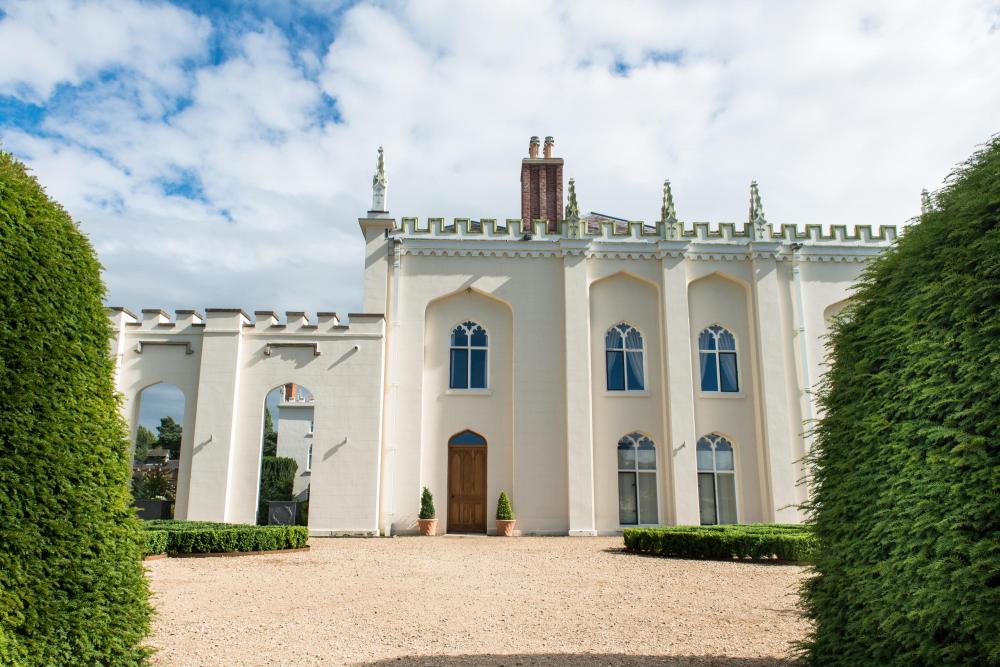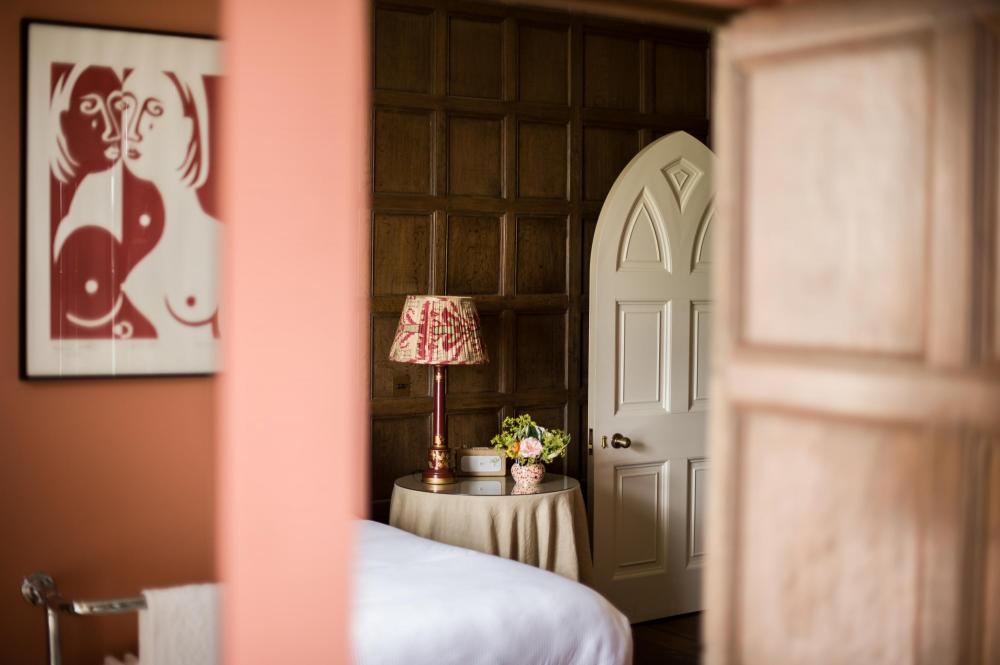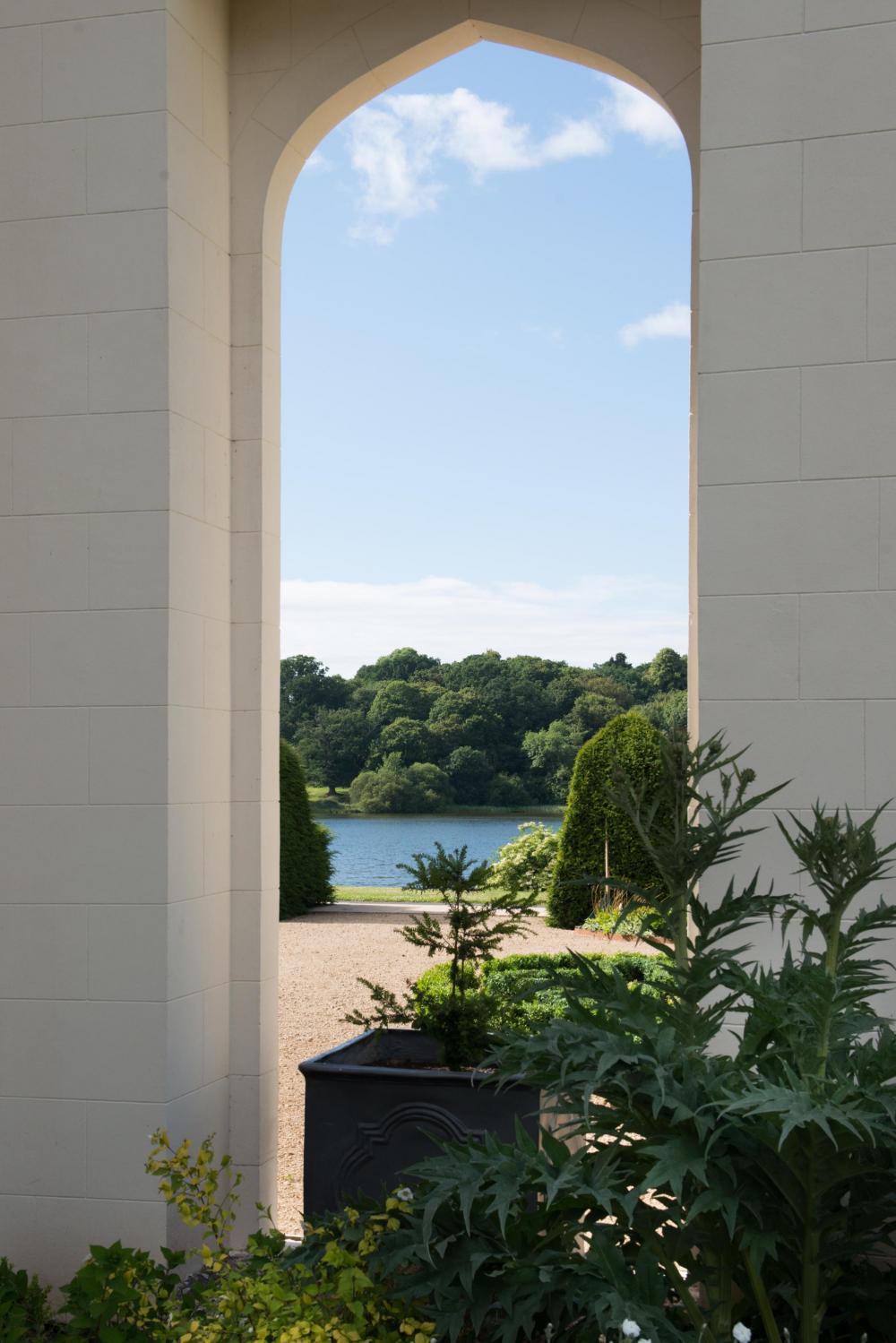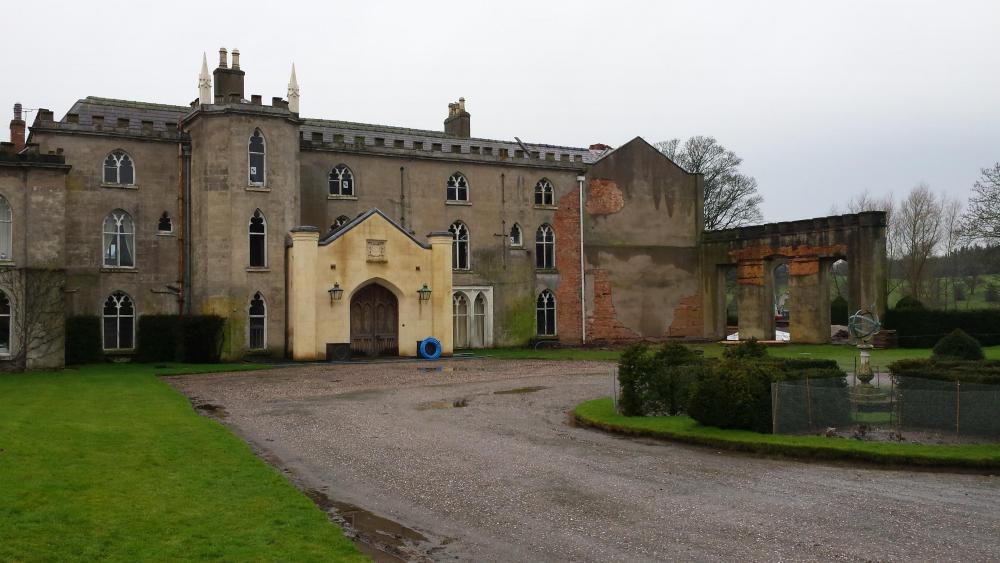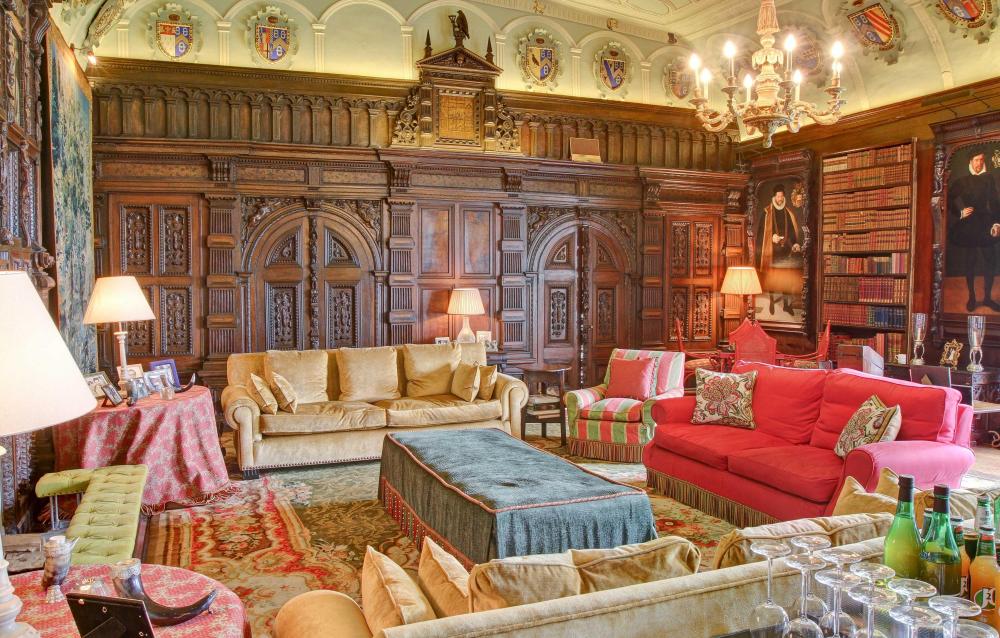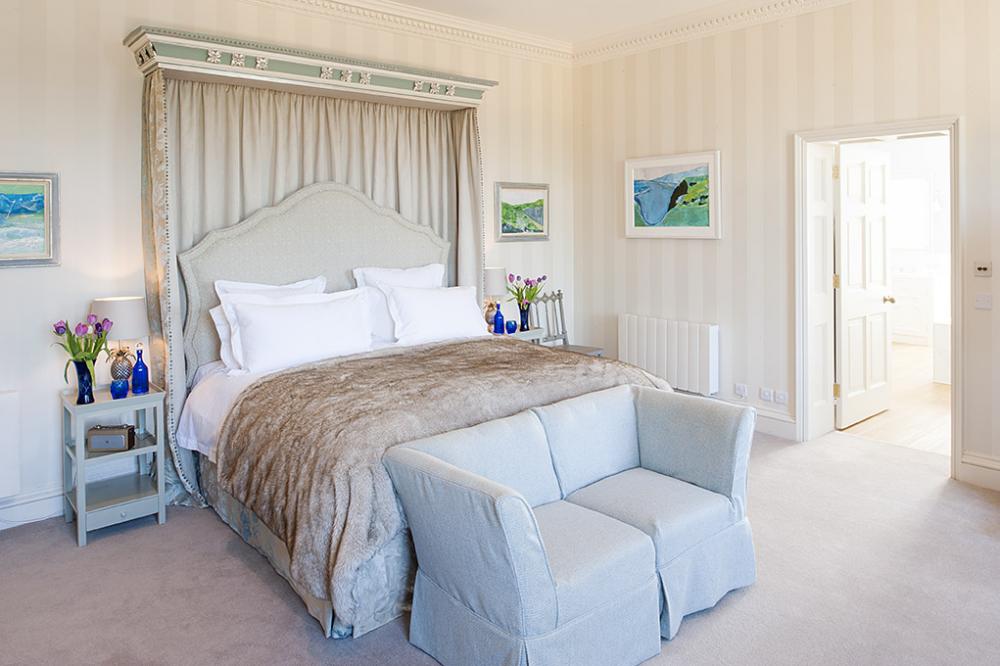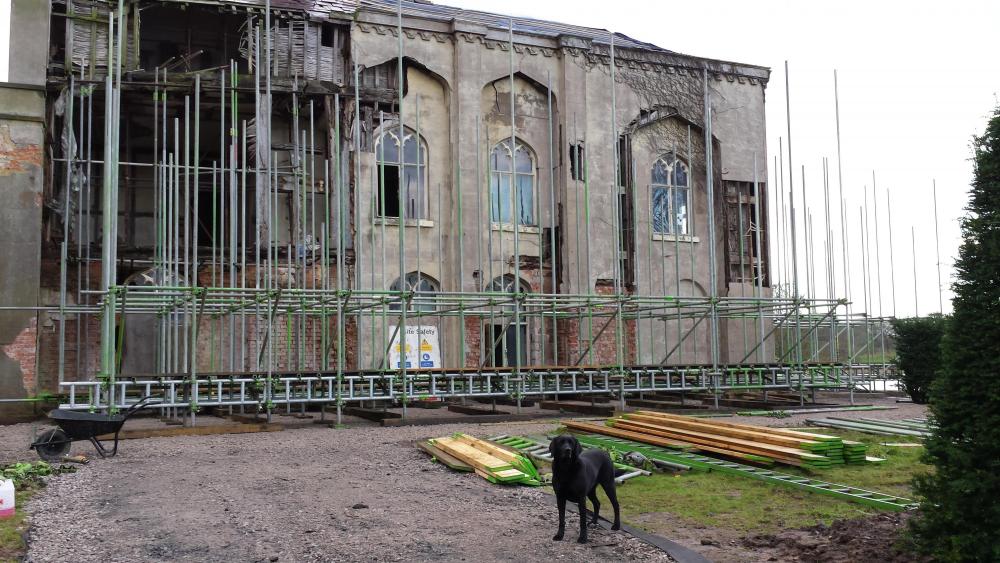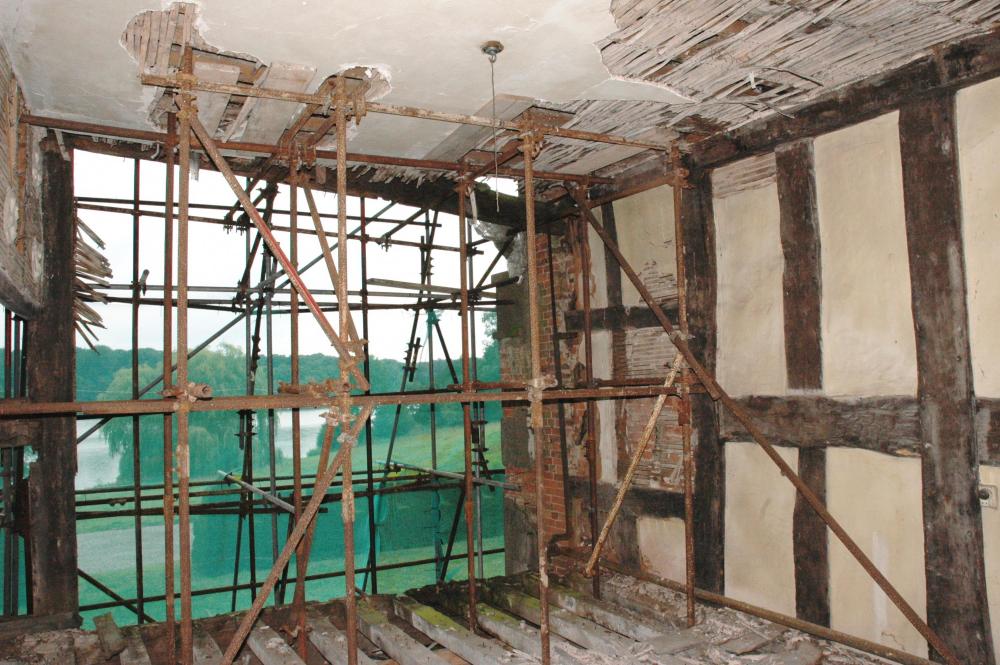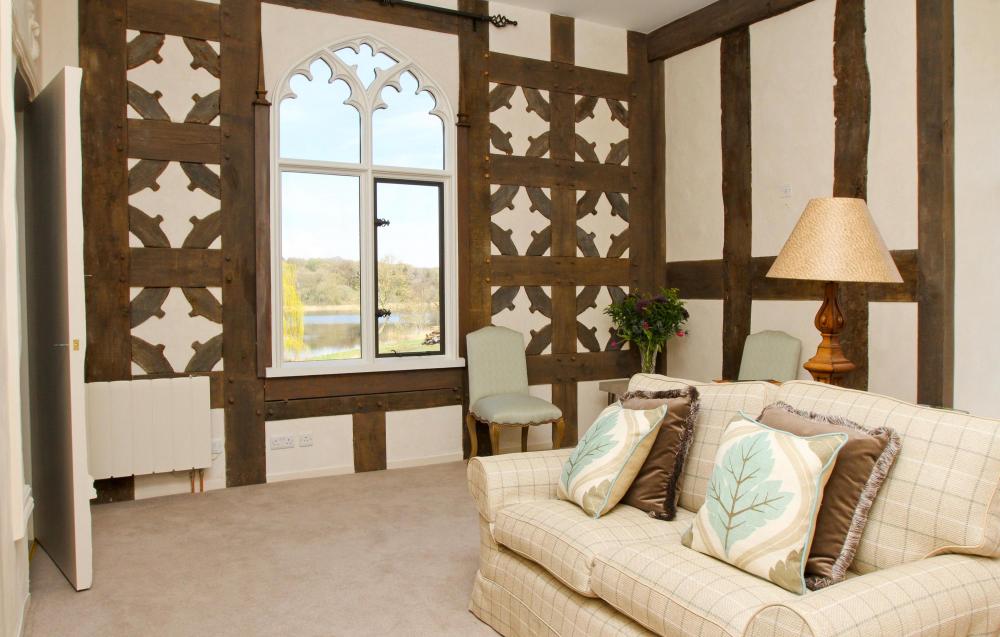In 1992, the great-granddaughter of Sir Kenneth Crossley, Sarah Callander Beckett, inherited the Combermere Abbey estate.
Inheriting the estate from her mother Penelope Bostock, Sarah left her life in New York as North American PR Director for Laura Ashley to return the UK and inherited the family home in 1992. That same year she began the restoration of this once celebrated estate which has seven listed buildings, all in advanced state of disrepair or dereliction. These included the Abbey itself, the 19th century stable block, service buildings, 6 acres of Victorian Walled Gardens and Edwardian Glasshouse.
Passionately committed to its renaissance and the restoration of its buildings and land, she is exceptionally proud of the team she leads and their shared energy and enthusiasm for its success.
A twenty-six-year programme of restoration and rejuvenation has turned the estate into a successful tourism and event business while still remaining a family home.
The first major commercial regeneration was completed in 1993: the conversion of the Victorian stable block into luxury self-catering cottages and this prompted the beginning of restoration of the five and a half acres of Walled Gardens which were completed over the next decade. In 1995, Combermere Abbey became a licensed wedding, following legislation which allowed private premises to become venues. Combermere was the second historic building in England, and the first in Cheshire, to secure a wedding license.
Work began in 1997 to restore the Abbey itself, with the Library (originally the Abbot’s Hall of the monastery) completed in 2014. It is the most impressive & historic room in the house where the famous ‘Ghost of Lord Combermere’ photo was taken following the death of the second Viscount around the time of his burial.
In 2014, after a 13 year battle, the restoration of the abandoned and derelict North Wing began. Abandoned in 1959, these huge restoration works uncovered a wealth of historic treasures: such as a man’s and horse’s shoe concealed in the Abbey for good luck during building works in the 18th century.
In 2016 the newly renovated North Wing was unveiled, and transformed into a luxurious country bed and breakfast where guests can find peace and tranquillity in the country air whilst revelling in a truly historic building.
Lady.co.uk talks to Sarah on the restoration of Combermere Abbey.
How do you manage the balance of the family home and business and how many staff do you have helping on a daily basis?
Taking on the running of the estate was very much a lifestyle decision as much as a business decision and it is quite a juggling act, however, I have an amazing team around me who are responsible for different parts of the business. I employ 29 people, mostly employed and some self-employed. I rely hugely on my PA Heather to keep me on the straight and narrow and the diaries up to date.
A huge undertaking and quite a different life to embrace after NYC! Apart from the family connection and importance of the estate’s heritage, what inspired you to take on such a massive project? Did you have people who helped advise and support you at the start? It must have been daunting knowing it might take so long?
Yes it was quite a change, but I was fortunate to spend the first two years in England still working for Laura Ashley as the International PR Director, so I acclimatised a bit. I was inspired by the opportunity which the project offered - I could harness the skills and commercial experience from working overseas in the US and apply them to my own project.
The estate seemed to be languishing and really needed a huge dose of energy, new thinking and optimism injecting into it. It is such a powerful space - the landscape, buildings and environment are truly magical.
It needed to make the leap into the modern world and if offered huge potential. Because it is a historic property and Grade 1 as well, I gathered a small team of professionals, architects and people associated with that area to help with a long term plan.
The team expanded into friends and colleagues in hospitality, design and marketing to put flesh on the bones of my plans. It was a very inspiring time, people really reacted so positively to the ideas.
Incredible! So it sounds like each section of restoration was a massive project which in turn lead to another. Were there initial plans to do a wedding venue or was this idea following on from previous restoration?
The restoration evolved organically and each stage ‘found’ its reason to exist and contribute to the whole. My clear philosophy was that each building and area restored would have a sustainable function to make sure it was fit for the long-term.
The plans for a wedding venue came about because two dear friends wanted to get married there, and we were the first or second venue in the country to get our license! Then it grew to hosting a few each year, and in 2007 we put a full business plan together, restored the glasshouse in the Walled Gardens and off we went. It was actually great because it meant the restoration of all the Walled Gardens...
What was the ‘battle’ of the north Wing regarding?
The battle was around gaining planning permission for an enabling development to fund the project, which was costed at £2 million. We had two attempts and finally achieved it on the second one. It developed my ‘patience’ and tolerance levels, which were not natural traits for me! Anyway, all the nimbyism disappeared as soon as it was approved... It was a great day to see it taken off the Historic England At Risk Register!
In the 1970s an attempt to repair the Abbey required the demolition of the Wellington dining room wing and a service wing. The building is a very complex architectural patchwork quilt of monastic, Tudor and 19th century early gothic construction.


